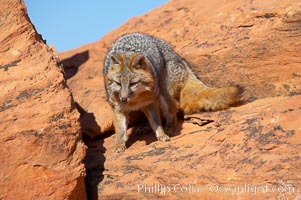
Gray fox. Gray foxes are found in deciduous woodlands, but are occasionally seen in old fields foraging for fruits and insects. Gray foxes resemble small, gracile dogs with bushy tails. They are distinguished from most other canids by their grizzled upperparts, buff neck and black-tipped tail.
Species: Gray fox, Urocyon cinereoargenteus
Image ID: 12096
Species: Gray fox, Urocyon cinereoargenteus
Image ID: 12096
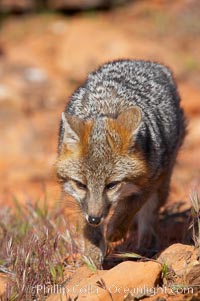
Gray fox. Gray foxes are found in deciduous woodlands, but are occasionally seen in old fields foraging for fruits and insects. Gray foxes resemble small, gracile dogs with bushy tails. They are distinguished from most other canids by their grizzled upperparts, buff neck and black-tipped tail.
Species: Gray fox, Urocyon cinereoargenteus
Image ID: 12097
Species: Gray fox, Urocyon cinereoargenteus
Image ID: 12097
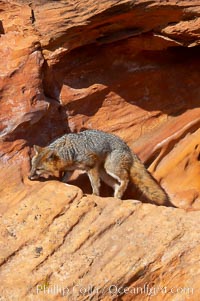
Gray fox. Gray foxes are found in deciduous woodlands, but are occasionally seen in old fields foraging for fruits and insects. Gray foxes resemble small, gracile dogs with bushy tails. They are distinguished from most other canids by their grizzled upperparts, buff neck and black-tipped tail.
Species: Gray fox, Urocyon cinereoargenteus
Image ID: 12098
Species: Gray fox, Urocyon cinereoargenteus
Image ID: 12098
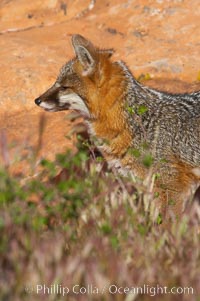
Gray fox. Gray foxes are found in deciduous woodlands, but are occasionally seen in old fields foraging for fruits and insects. Gray foxes resemble small, gracile dogs with bushy tails. They are distinguished from most other canids by their grizzled upperparts, buff neck and black-tipped tail.
Species: Gray fox, Urocyon cinereoargenteus
Image ID: 12099
Species: Gray fox, Urocyon cinereoargenteus
Image ID: 12099
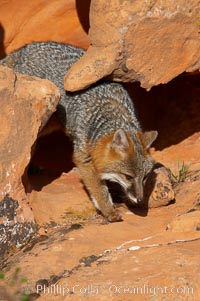
Gray fox. Gray foxes are found in deciduous woodlands, but are occasionally seen in old fields foraging for fruits and insects. Gray foxes resemble small, gracile dogs with bushy tails. They are distinguished from most other canids by their grizzled upperparts, buff neck and black-tipped tail.
Species: Gray fox, Urocyon cinereoargenteus
Image ID: 12100
Species: Gray fox, Urocyon cinereoargenteus
Image ID: 12100
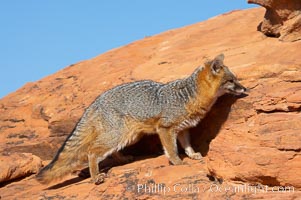
Gray fox. Gray foxes are found in deciduous woodlands, but are occasionally seen in old fields foraging for fruits and insects. Gray foxes resemble small, gracile dogs with bushy tails. They are distinguished from most other canids by their grizzled upperparts, buff neck and black-tipped tail.
Species: Gray fox, Urocyon cinereoargenteus
Image ID: 12101
Species: Gray fox, Urocyon cinereoargenteus
Image ID: 12101
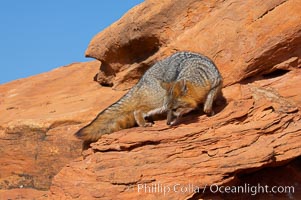
Gray fox. Gray foxes are found in deciduous woodlands, but are occasionally seen in old fields foraging for fruits and insects. Gray foxes resemble small, gracile dogs with bushy tails. They are distinguished from most other canids by their grizzled upperparts, buff neck and black-tipped tail.
Species: Gray fox, Urocyon cinereoargenteus
Image ID: 12102
Species: Gray fox, Urocyon cinereoargenteus
Image ID: 12102
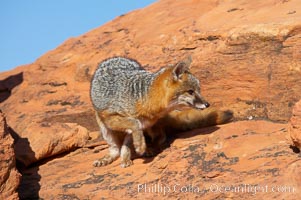
Gray fox. Gray foxes are found in deciduous woodlands, but are occasionally seen in old fields foraging for fruits and insects. Gray foxes resemble small, gracile dogs with bushy tails. They are distinguished from most other canids by their grizzled upperparts, buff neck and black-tipped tail.
Species: Gray fox, Urocyon cinereoargenteus
Image ID: 12103
Species: Gray fox, Urocyon cinereoargenteus
Image ID: 12103
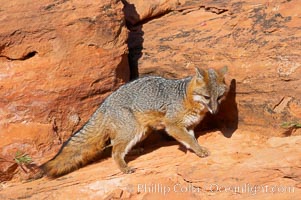
Gray fox. Gray foxes are found in deciduous woodlands, but are occasionally seen in old fields foraging for fruits and insects. Gray foxes resemble small, gracile dogs with bushy tails. They are distinguished from most other canids by their grizzled upperparts, buff neck and black-tipped tail.
Species: Gray fox, Urocyon cinereoargenteus
Image ID: 12104
Species: Gray fox, Urocyon cinereoargenteus
Image ID: 12104
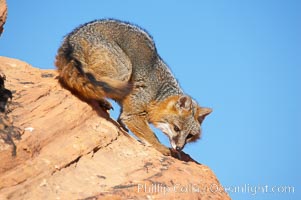
Gray fox. Gray foxes are found in deciduous woodlands, but are occasionally seen in old fields foraging for fruits and insects. Gray foxes resemble small, gracile dogs with bushy tails. They are distinguished from most other canids by their grizzled upperparts, buff neck and black-tipped tail.
Species: Gray fox, Urocyon cinereoargenteus
Image ID: 12105
Species: Gray fox, Urocyon cinereoargenteus
Image ID: 12105
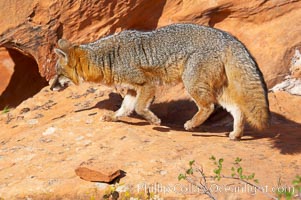
Gray fox. Gray foxes are found in deciduous woodlands, but are occasionally seen in old fields foraging for fruits and insects. Gray foxes resemble small, gracile dogs with bushy tails. They are distinguished from most other canids by their grizzled upperparts, buff neck and black-tipped tail.
Species: Gray fox, Urocyon cinereoargenteus
Image ID: 12106
Species: Gray fox, Urocyon cinereoargenteus
Image ID: 12106
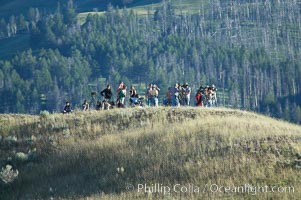
Wolf watchers gather on a bluff near Slough Creek with high power field scopes and binoculars to observe the Slough Creek pack of wolves.
Location: Lamar Valley, Yellowstone National Park, Wyoming
Image ID: 13652
Location: Lamar Valley, Yellowstone National Park, Wyoming
Image ID: 13652
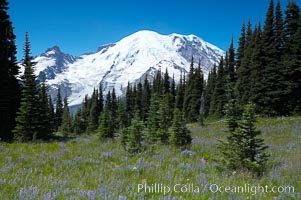
Mount Rainier rises above a field of lupine, summer, Sunrise.
Location: Sunrise, Mount Rainier National Park, Washington
Image ID: 13875
Location: Sunrise, Mount Rainier National Park, Washington
Image ID: 13875
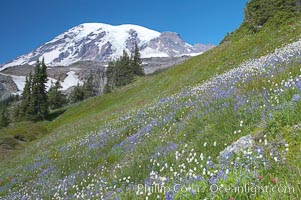
Mount Rainier rises above fields of wildflowers in Paradise Meadows, summer.
Location: Paradise Meadows, Mount Rainier National Park, Washington
Image ID: 13891
Location: Paradise Meadows, Mount Rainier National Park, Washington
Image ID: 13891
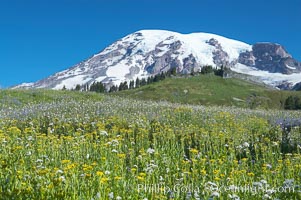
Mount Rainier rises above fields of wildflowers in Paradise Meadows, summer.
Location: Paradise Meadows, Mount Rainier National Park, Washington
Image ID: 13897
Location: Paradise Meadows, Mount Rainier National Park, Washington
Image ID: 13897
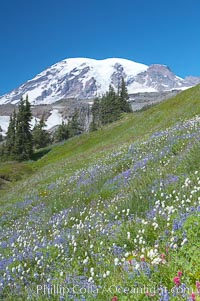
Mount Rainier rises above fields of wildflowers in Paradise Meadows, summer.
Location: Paradise Meadows, Mount Rainier National Park, Washington
Image ID: 13903
Location: Paradise Meadows, Mount Rainier National Park, Washington
Image ID: 13903
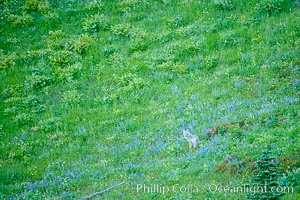
Coyote pauses amid a field of lupine near Tipsoo Lake.
Species: Coyote, Canis latrans
Location: Tipsoo Lakes, Mount Rainier National Park, Washington
Image ID: 13917
Species: Coyote, Canis latrans
Location: Tipsoo Lakes, Mount Rainier National Park, Washington
Image ID: 13917
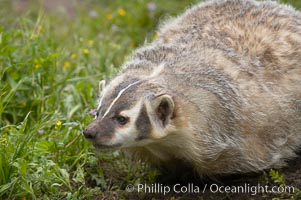
American badger. Badgers are found primarily in the great plains region of North America. Badgers prefer to live in dry, open grasslands, fields, and pastures.
Species: American badger, Taxidea taxus
Image ID: 15949
Species: American badger, Taxidea taxus
Image ID: 15949
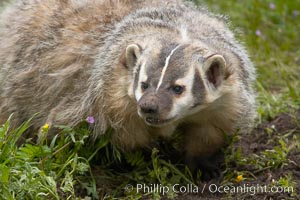
American badger. Badgers are found primarily in the great plains region of North America. Badgers prefer to live in dry, open grasslands, fields, and pastures.
Species: American badger, Taxidea taxus
Image ID: 15950
Species: American badger, Taxidea taxus
Image ID: 15950
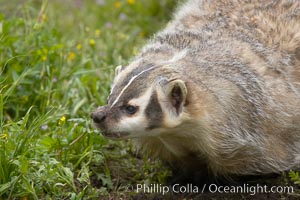
American badger. Badgers are found primarily in the great plains region of North America. Badgers prefer to live in dry, open grasslands, fields, and pastures.
Species: American badger, Taxidea taxus
Image ID: 15951
Species: American badger, Taxidea taxus
Image ID: 15951
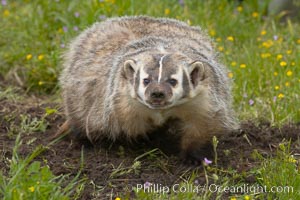
American badger. Badgers are found primarily in the great plains region of North America. Badgers prefer to live in dry, open grasslands, fields, and pastures.
Species: American badger, Taxidea taxus
Image ID: 15952
Species: American badger, Taxidea taxus
Image ID: 15952
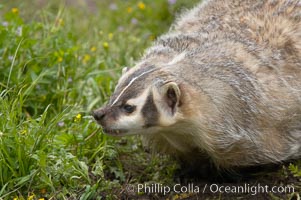
American badger. Badgers are found primarily in the great plains region of North America. Badgers prefer to live in dry, open grasslands, fields, and pastures.
Species: American badger, Taxidea taxus
Image ID: 15953
Species: American badger, Taxidea taxus
Image ID: 15953
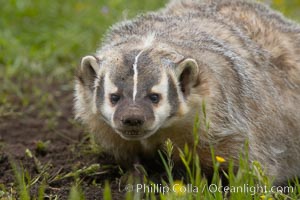
American badger. Badgers are found primarily in the great plains region of North America. Badgers prefer to live in dry, open grasslands, fields, and pastures.
Species: American badger, Taxidea taxus
Image ID: 15954
Species: American badger, Taxidea taxus
Image ID: 15954

The Carlsbad Flower Fields, 50+ acres of flowering Tecolote Ranunculus flowers, bloom each spring from March through May.
Location: Carlsbad Flower Fields, California
Image ID: 18910
Location: Carlsbad Flower Fields, California
Image ID: 18910

The Carlsbad Flower Fields, 50+ acres of flowering Tecolote Ranunculus flowers, bloom each spring from March through May.
Location: Carlsbad Flower Fields, California
Image ID: 18911
Location: Carlsbad Flower Fields, California
Image ID: 18911

The Carlsbad Flower Fields, 50+ acres of flowering Tecolote Ranunculus flowers, bloom each spring from March through May.
Location: Carlsbad Flower Fields, California
Image ID: 18912
Location: Carlsbad Flower Fields, California
Image ID: 18912

The Carlsbad Flower Fields, 50+ acres of flowering Tecolote Ranunculus flowers, bloom each spring from March through May.
Location: Carlsbad Flower Fields, California
Image ID: 18913
Location: Carlsbad Flower Fields, California
Image ID: 18913

The Carlsbad Flower Fields, 50+ acres of flowering Tecolote Ranunculus flowers, bloom each spring from March through May.
Location: Carlsbad Flower Fields, California
Image ID: 18914
Location: Carlsbad Flower Fields, California
Image ID: 18914

The Carlsbad Flower Fields, 50+ acres of flowering Tecolote Ranunculus flowers, bloom each spring from March through May.
Location: Carlsbad Flower Fields, California
Image ID: 18915
Location: Carlsbad Flower Fields, California
Image ID: 18915

The Carlsbad Flower Fields, 50+ acres of flowering Tecolote Ranunculus flowers, bloom each spring from March through May.
Location: Carlsbad Flower Fields, California
Image ID: 18916
Location: Carlsbad Flower Fields, California
Image ID: 18916